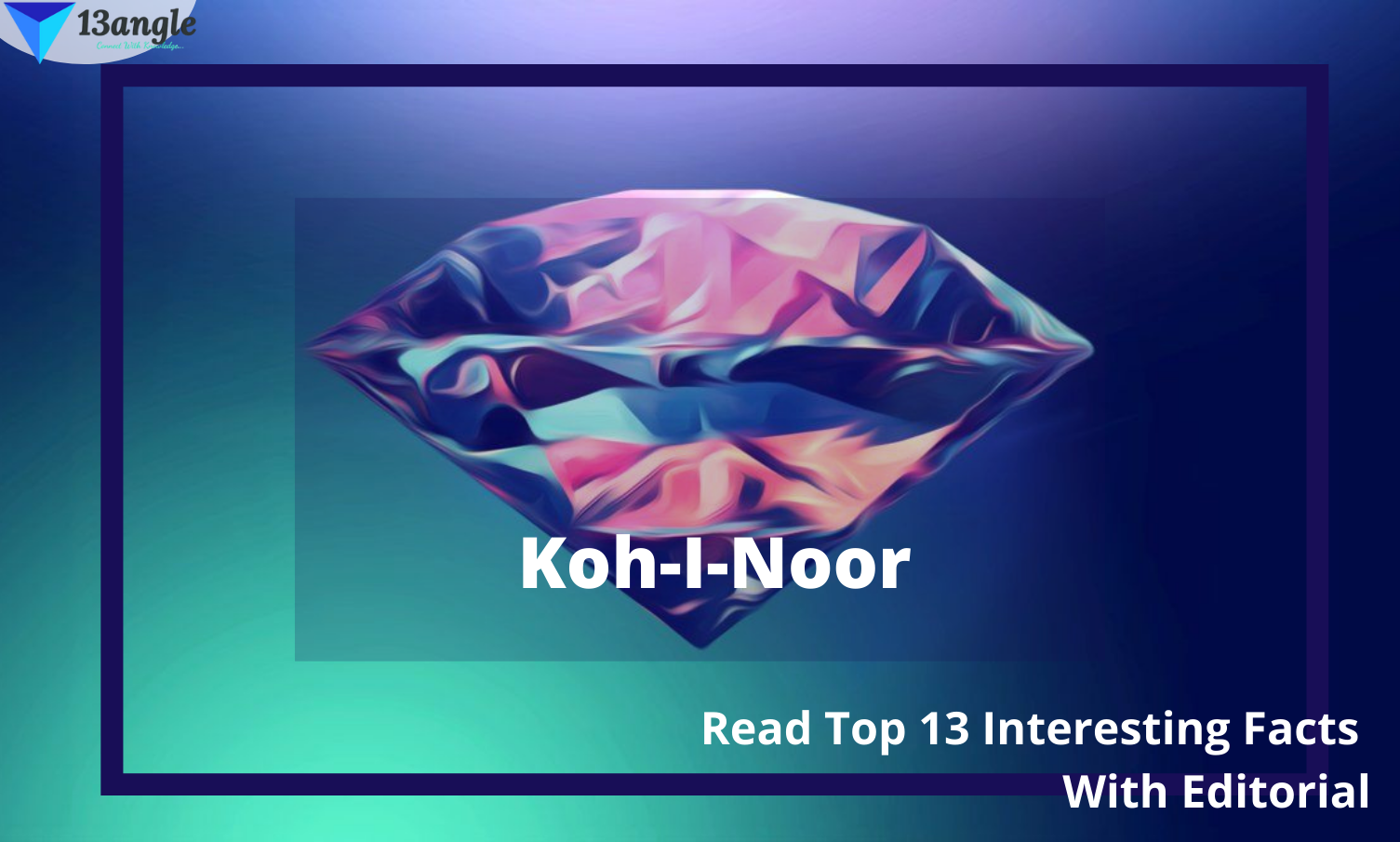- Umang Sagar
- Biography, Historical
Kohinoor Diamond
Introduction:-
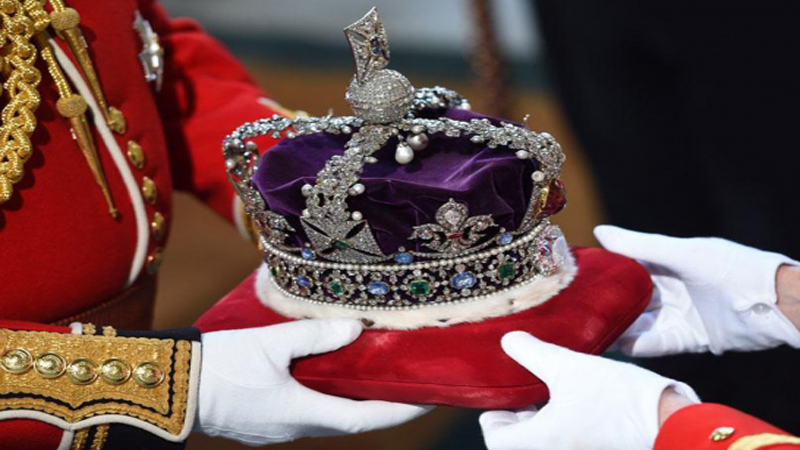
Kohinoor is one of the most famous colourless diamonds in the world found near Guntur in Andhra Pradesh, India in the 13th century.

Kohinoor diamond was originated at Kollur mine in the 13th century.

The Kohinoor is a Persian word that means “Mountain Of Light” and the name was given by Persian general Nadir Shah in 1739.

After the second Anglo- Sikh war which was ended in 1849, Duleep Singh (Last Maharaja of Punjab) gave Kohinoor to lord Dalhousie due to the treaty of Lahore.
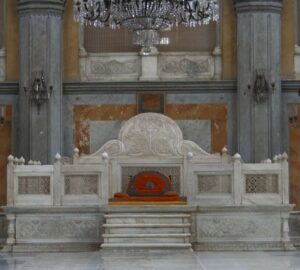
Kohinoor diamond was also part of the Mughal Peacock Throne during the Mughal era.
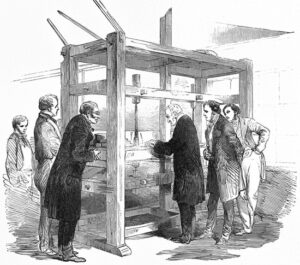
The Kohinoor diamond was cut by Levie Benjamin Voorzanger.
- Currently, the Kohinoor is on a public display in the jewel house at the Tower of London, UK. And the current owner of the Kohinoor diamond is Queen Elizabeth-II. The present weight of the Kohinoor diamond is 21.12g (105.602 carats). The Kohinoor was originally 793 carats when it was uncut which makes Kohinoor the biggest diamond in the world.
 |  |
The Kohinoor diamond is very much precious because of its magnanimous traits and its size which makes it one of the most desirable precious diamonds in the world.
The Kohinoor diamond is so precious that even today its original value is not known but its estimated to be worth between (140- 400 million) euros.
It also believed by many rulers that the Kohinoor diamond is very unlucky and a cursed gem for men as it is owned by numerous rulers over the years and whoever owns the diamond lost their kingdom as well as lives.
History Of Kohinoor Diamond :-
- The Kohinoor diamond was originated when mined in the Kollur mine during the period of Kakitiya dynasty in the 13th century.
DO YOU KNOW :-
- It is also believed that the Kohinoor diamond was first mentioned 5000 years ago in a Sanskrit script, where it was called the Syamantaka gem. But it was later said that it was only conjectured that the Syamantaka and Kohinoor diamonds were the same and there was no evidence of this.
1. Under Kakatiya’s Possession:-
- Diamond was under the Kakatiya dynasty till 1304.
2. Under Khilji’s Possession:-
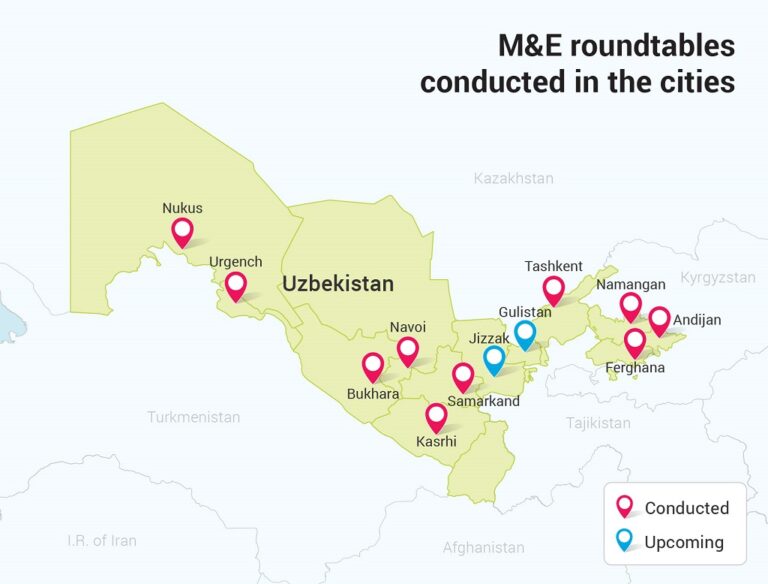
But in the year 1304, it was acquired by Khilji dynasty emperor Alauddin Khilji when he invaded the kingdom of southern India at the beginning of the 14th century. And later the diamond was passed to the succeeding emperors of the dynasty.
Then in 1330, the diamond was taken to the city of Samarkand where it stayed for around 300 years.
DO YOU KNOW :-
- It is said that it has also been found in many scriptures that in 1336 the men wearing this diamond were cursed. Only God or women can wear it without punishment.
3. Under Mughal Possession :-
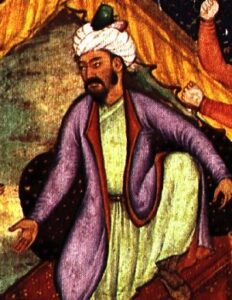
This diamond was also the part of Mughal peacock throne.
In the year 1526, Babur mentioned the diamond in his writings. And the proofs are found in Babur Nama. The diamond was surrendered to him by Ibrahim Lodhi when he won the “Battle Of Panipat“ and conquered Delhi and Agra.
DO YOU KNOW :-
- Babur equated the total cost of diamonds to half a day’s production cost of the world.

And later the diamond was given to the later emperors of the Mughal dynasty. Shah Jahan placed a diamond on his ornate peacock throne.
Shah Jahan’s son Aurangzeb protected the diamond very diligently and passed it to his heirs.
DO YOU KNOW :-
When the diamond was under Aurangzeb’s possession, the diamond was allegedly cut by Hortense Borgia due to his carelessness Borgia was fined around 10000 Rs. and reprimanded by Aurangzeb.
But later in research, it was proved that the story about Borgia cuts the diamond is not true.
During the rule of Aurangzeb’s grandson Muhammad Shah in 1739, Delhi was invaded by Nadir Shah, the Shah of Persia. His army looted all the jewels in the royal Mughal treasury, which also included the famous Peacock Throne, and Daria-i-Noor, the sister diamond of the Kohinoor. However, the Kohinoor was nowhere to be seen.
It was because Muhammad Shah used to carry the diamond hidden in the folds of his turban, a secret known only to a select few, including a eunuch in the Emperor’s Harem. In the hope of winning the favor of the victorious Nadir Shah, the treacherous Kinnar pours the emperor’s secret into his ears. Formulating a plan to deprive Muhammad Shah of his prized possession, Nadir Shah ordered a grand feast with Muhammad Shah restored to his throne.

During the feast, Nadir Shah proposed an exchange of turbans as a sign of eternal friendship, and Muhammad Shah, unable to refuse the gesture, had to hand over his turban. After the ceremony, Nadir Shah returned to his private chambers, where he eagerly untied the turban to find the diamond hidden inside. Dazzled by its beauty, he pronounced ‘Kohinoor’, which in Persian means the “Mountain Of Light”. One of the wives of Nadir Shah, astonished by the Kohinoor.
4. Under Nadir Shah’s Possession :-



And then Nadir Shah named the diamond Kohinoor Hira in Persian which means “Mountain of Light”. After the naming ceremony was over, efforts were being made to know the real value of Kohinoor but it could not happen. Then the finance minister of Nadir Shah’s court summed up the significance of the Kohinoor in one sentence as follows, “If a mighty man throws four stones—one north, one south, one east, one west, and a fifth stone up in the air—and if his If the middle space is filled with gold, then all the diamonds will not be equal in value to the Kohinoor”.
But in 1747, Nadir Shah was assassinated by one of his military generals, Ahmad Shah Durrani, and the Kohinoor diamond fell to his grandson and was later handed over to Ahmad Shah in 1751. Ahmad Shah later becomes the Emir Of Afghanistan.
DO YOU KNOW :-
- Ahmad Shah Durrani was the founder of the Afghan Empire.
- Shah Shuja Durrani, a descendant of Ahmad Shah Durrani, brought the Kohinoor diamond back to India in 1813. And gave it to Ranjit Singh. In return, Ranjit Singh helped Shah Shuja Durrani regain the throne of Afghanistan.
5. Under Sikh Possession :-

When Shah Shuja Durrani handed over the Kohinoor diamond to Ranjit Singh. Ranjit Singh examined the Kohinoor diamond by the jewelers of Lahore in order to get ensure that the Kohinoor diamond is real and not tricked by Shah Shuja Durrani.
And after the confirmation of the Kohinoor diamond, Ranjit Singh offered 1,25,000 rupees to Shah Shuja Durrani along with the money Ranjit Singh helped Shah Shuja Durrani with his army to get back the throne of Afghanistan for Shah Shuja Durrani.
Ranjit Singh was very much interested to know the real worth of Kohinoor so he asked from his jewelers to declare the real worth of Kohinoor then jewelers after very careful research jewelers from Lahore states the worth of Kohinoor as “far beyond all computation”. Then, Ranjit Singh was so happy that he has something so valuable that its worth can’t be calculated.
After that Ranjit Singh placed Kohinoor diamond on the top of his turban. And Ranjit Singh used to wear that turban along with Kohinoor on special occasions. Ranjit Singh also exhibits the Kohinoor to prominent visitors.
One day Ranjit Singh asked Shah Shuja Durrani and his wife about the worth of Kohinoor according to their belief. Then Shah Shuja’s wife states about the worth of Kohinoor according to them as “if a strong man were to throw four stones – one north, one south, one east, one west, and a fifth stone up into the air – and if the space between them were to be filled with gold, all would not equal the value of the diamond Koh-I-Noor“. After hearing that Ranjit Singh was worried and grew paranoid after knowing the worth of the diamond. He kept the diamond in a very high-security facility at Gobindgarh fort.
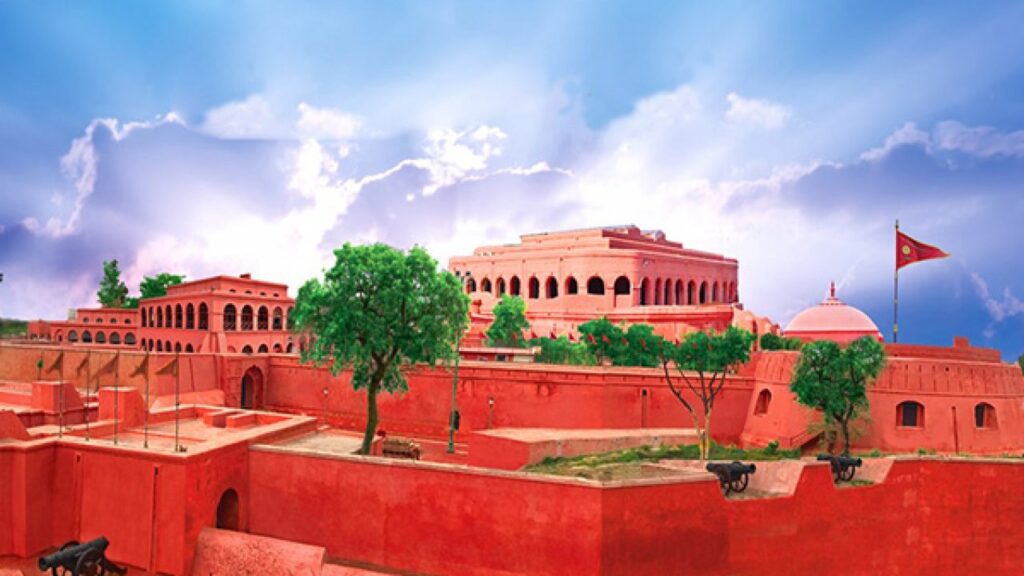

DO YOU KNOW :-
- Kohinoor was shifted to Gobindgarh Fort on a camel. During the transportation process, there were 39 identical camels were included in the convoy.
- The Kohinoor was placed in the first camel.
- Only Ranjit Singh’s finance minister Misr Beli knew which camel carries the Kohinoor diamond.
In 1839, when Ranjit Singh was very ill and it became apparent that he would die soon. He had a bill that his son Kharak Singh will be his successor. And during his last time, he donated many precious possessions to religious charities. One day before death he decided to donate the precious Kohinoor diamond to Jagannath temple in Puri (currently, in Odisha, India).
But his finance minister Beli Ram insisted to the court that the Kohinoor is a state property not Ranjit Singh’s personal property so it must be handed over to his successor Kharak Singh. And after Ranjit Singh’s death, Beli Singh refused to send the Kohinoor to the Jagannath temple.
On 8th October 1839, Ranjit Singh’s son Kharak Singh was overthrown by his Prime Minister Dhian Singh and put into prison and after time Kharak Singh died in prison. While on the other hand, the Prime Minister’s brother Gulab Singh (King of Jammu) took Kohinoor’s diamond under his possession.
Kharak Singh died in prison, soon followed by the mysterious death of his son and successor Nau Nihal Singh on 5 November 1840. Gulab Singh held the DIAMOND until January 1841, Then he presented it to Emperor Sher Singh to win his favor. After negotiations of a ceasefire between Sher Singh and the deposed Maharani Chand Kaur by his brother Dhian Singh. Gulab Singh attempted to protect the widowed Maharani at his fort in Lahore during two days of fighting and shelling by Sher Singh and his army. Despite handing over to Kohinoor, as a result of the ceasefire, Gulab Singh returned safely to Jammu with money from the treasury of gold and other ornaments.
On 15 September 1843, both Sher Singh and Prime Minister Dhian Singh were assassinated in an encounter led by Ajit Singh Sandhawalia. However, the next day the killers were killed by the encounter team led by Dhian’s son Hira Singh. At the age of 24, Hira Singh succeeded his father as Prime Minister and put a five-year-old infant Duleep Singh on the throne as emperor.
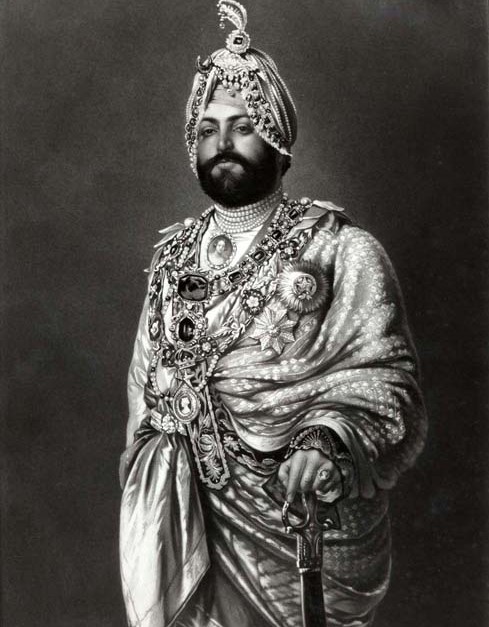
The Kohinoor was now tied in the hands of the Duleep Singh in the court of Lahore. Duleep Singh and his mother Maharani Jind Kaur, till then used to live in Jammu, the state ruled by Gulab Singh.
Following the assassination of his nephew Prime Minister Hira Singh on 27 March 1844, and the subsequent outbreak of the First Anglo-Sikh War, Gulab Singh himself led the Sikh Empire as its Prime Minister, and despite defeat in the war, he became the first Maharaja of Jammu and Kashmir under the Treaty of Amritsar on 16 March 1846.
6. Under The Possession Of Britishers :-
In 1849, following the conquest of Punjab by the British Army, the properties of the Sikh Empire were confiscated.
The Kohinoor was transferred to the treasury of the British East India Company at Lahore.
The properties of the Sikh Empire were taken as war compensation by the British East India company. A line of the Treaty of Lahore was also dedicated to the fate of the Kohinoor.
The Kohinoor diamond was shipped to Britain on a ship that was found to have cholera and the keeper of the diamond is believed to have lost it for a few days and it was returned to him by his servant.
The Kohinoor diamond was handed over to Queen Victoria in July 1850.
7. Under The Possession Of Queen Victoria :-
When Nadir Shah heard about the diamond, he decided that he wanted to take possession of Kohinoor diamond.
The Kohinoor diamond was displayed at the Crystal Palace a year later after it was handed over to Queen Victoria.
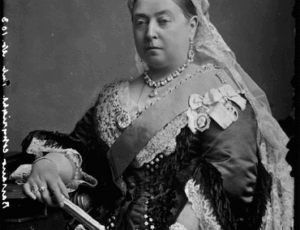
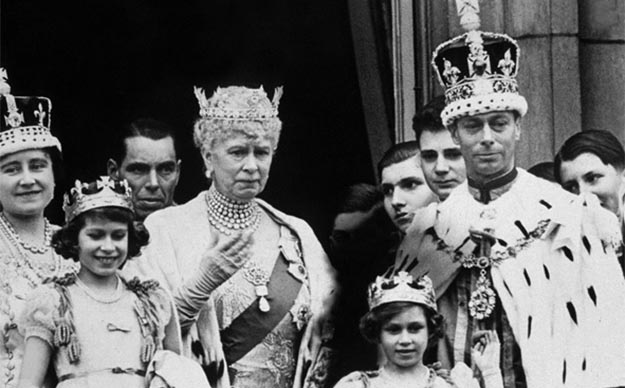
But the Kohinoor diamond was not as lustrous as other cut gems of that era and there was a general disappointment about the diamond among the British queen and her officials.
In 1852 the Queen decided to reshape the diamond to make it more lustrous and attractive; The Queen ordered her officers to take the Kohinoor diamond to a Dutch jeweler, Mr. Cantor, who cut it to 108.93 carats. gave.
Queen Victoria later occasionally wore the diamond. He had written in his will that the Kohinoor should be worn only by a female queen.
If the head of state was a man, his wife would have to carry the diamond. Kohinoor became part of the Crown Jewels after the death of Queen Victoria.
DO YOU KNOW :-
- Daria-Yeh Noor diamond is twice the size of the Kohinoor diamond. Daria-Yeh-Noor is in an Iranian court. Daria-Yeh-Noor diamond is also known as the sister of Kohinoor.
The Cutting Of Kohinoor Diamond :-

When the Kohinoor diamond came into the hands of the British royal family, it weighed about 186 carats (37 grams).
Prince Albert carefully discovered a diamond cutter with a very good reputation and went to the Netherlands where he gave the mission of cutting the diamond to Mr Cantor, who did the arduous task of cutting it.
Mr. Cantor worked on the diamond for about 38 days.
Prince Albert spent a total of £8,000 on the operation, The diamond was cut into an oval shape and the weight was reduced to its present form from 186 old carats (191 modern carats or 38.2 g) to the current 105.6 carats (21.12 g).
The stone measures 3.6 cm (1.4 in) long, 3.2 cm (1.3 in) wide and 1.3 cm (0.5 in) deep. Brilliantly cut diamonds usually have forty-eight facets, but the Kohinoor has eight additional “star” facets around the culvert, making a total of sixty-six facets.
According to eyewitnesses, Prince Albert was not satisfied with the cutting work because the diamond was not shining as brightly as before and he was very upset with that result.
DO YOU KNOW :-
- After the death of queen victoria, the Kohinoor diamond was set in the crown.
The Dispute With The Ownership Of Kohinoor Diamond
India’s Stand :-
- The Government of India believes that it is their right to get the Kohinoor back. From time to time the Indian government made several attempts but the British government rejected the demand for India. India believes that the Kohinoor is the property of India as it originated in the Kollur mines located in Andhra Pradesh, India. In April 2016, the Indian Ministry of Culture said it would make “Every Effort” to arrange for Kohinoor’s return to India.

Pakistan’s Stand :-
- Pakistan claimed ownership of the Kohinoor diamond, saying its return would be “a tangible display of the spirit that prompted Britain to voluntarily give up its royal bonds and lead the process of dissolution”. In a letter to the Prime Minister of Pakistan, Zulfikar Ali Bhutto, to the Prime Minister of the United Kingdom, James Callaghan, “I need not remind you of the various hands through which the stone has passed over the past two centuries, nor of 1849 In the peace treaty with the Maharaja of Lahore in AD 3, there was a clear provision for its transfer to the British Crown. I could not advise His Majesty that it be surrendered”.
Afghanistan’s Stand :-
- In 2000, Afghan Foreign Affairs spokesman Faiz Ahmad Faiz stated that the Kohinoor was the legitimate property of Afghanistan and demanded that it be handed over to the regime. “The history of diamond shows that it was taken from us (Afghanistan) to India and from there to Britain. Our claim is much better than that of Indians,” he said. The Afghan claim derives from the memoirs of Shah Shuja Durrani, which states that he handed over the diamond to Ranjit Singh while Singh was torturing his son in front of him, so argue that the Maharaja of Lahore obtained the stone illegally. have done.
Possible Advice By Different Countries:-
- Due to the quadrilateral dispute over the rightful owner of the diamond, several settlements have been suggested to end the dispute. These include dividing the diamond into four parts, with one piece given to Afghanistan, India, and Pakistan, and the last piece is retained by the British Crown. Another suggestion is that the jewel is kept in a special museum on the Wagah border between India and Pakistan. This suggestion, however, neither satisfies the Afghan claims, nor the reality of the current British occupation. The British government rejected these agreements, and has stated since the end of the British Raj that the status of the diamond is ‘non-negotiable’.
-: Top 13 Interesting Facts About Kohinoor Diamond :-
1. The Kohinoor is a Persian word that means “Mountain Of Light” and the name was given by Persian general Nadir Shah in 1739.
2. The Kohinoor was originally 793 carats when it was uncut which makes Kohinoor the biggest diamond in the world.
3. The Kohinoor diamond is so precious that even today its original value is not known but it’s estimated to be worth between (140- 400 million) euros.
4. It is also believed that the Kohinoor diamond was first mentioned 5000 years ago in a Sanskrit script, where it was called the Syamantaka gem. But it was later said that it was only conjectured that the Syamantaka and Kohinoor diamonds were the same and there was no evidence of this.
5. It is said that it has also been found in many scriptures that in 1336 the men wearing this diamond were cursed. Only God or women can wear it without punishment.
6. Babur equated the total cost of diamonds to half a day’s production cost of the world.
7. Kohinoor was shifted to Gobindgarh fort on the camel. During the transportation process, there were 39 identical camels were included in the convoy. Only Ranjit Singh’s finance minister Misr Beli knew which camel carries the Kohinoor diamond.
8. Daria-Yeh Noor diamond is twice the size of the Kohinoor diamond. Daria-Yeh-Noor is in an Iranian court.
9. Shah Shuja Durrani, a descendant of Ahmad Shah Durrani, brought the Kohinoor diamond back to India in 1813. And gave it to Ranjit Singh. In return, Ranjit Singh helped Shah Shuja Durrani regain the throne of Afghanistan.
10. The Finance Minister of Nadir Shah’s court summed up the significance of the Kohinoor in one sentence as follows, “If a mighty man throws four stones—one north, one south, one east, one west, and a fifth stone up in the air—and if his If the middle space is filled with gold, then all the diamonds will not be equal in value to the Kohinoor”.
11. The Kohinoor diamond was handed over to Queen Victoria in July 1850.
12. After the death of Queen Victoria, the Kohinoor diamond was set in the crown.
13. Prince Albert spent a total of £8,000 on the operation, the diamond was cut into an oval shape and the weight was reduced to its present form from 186 old carats (191 modern carats or 38.2 g) to the current 105.6 carats (21.12 g). According to eyewitnesses, Prince Albert was not satisfied with the cutting work because the diamond was not shining as brightly as before and he was very upset with that result.



